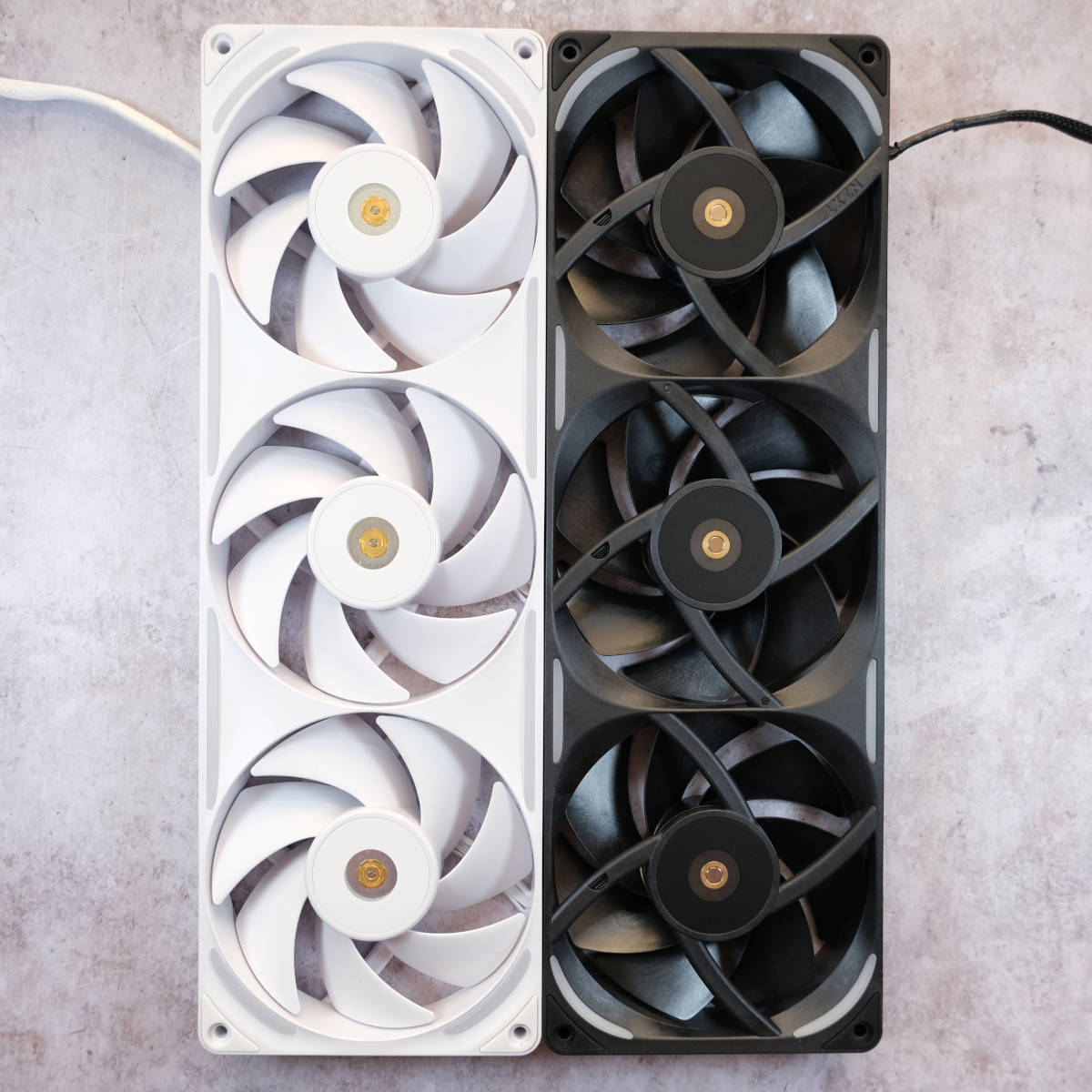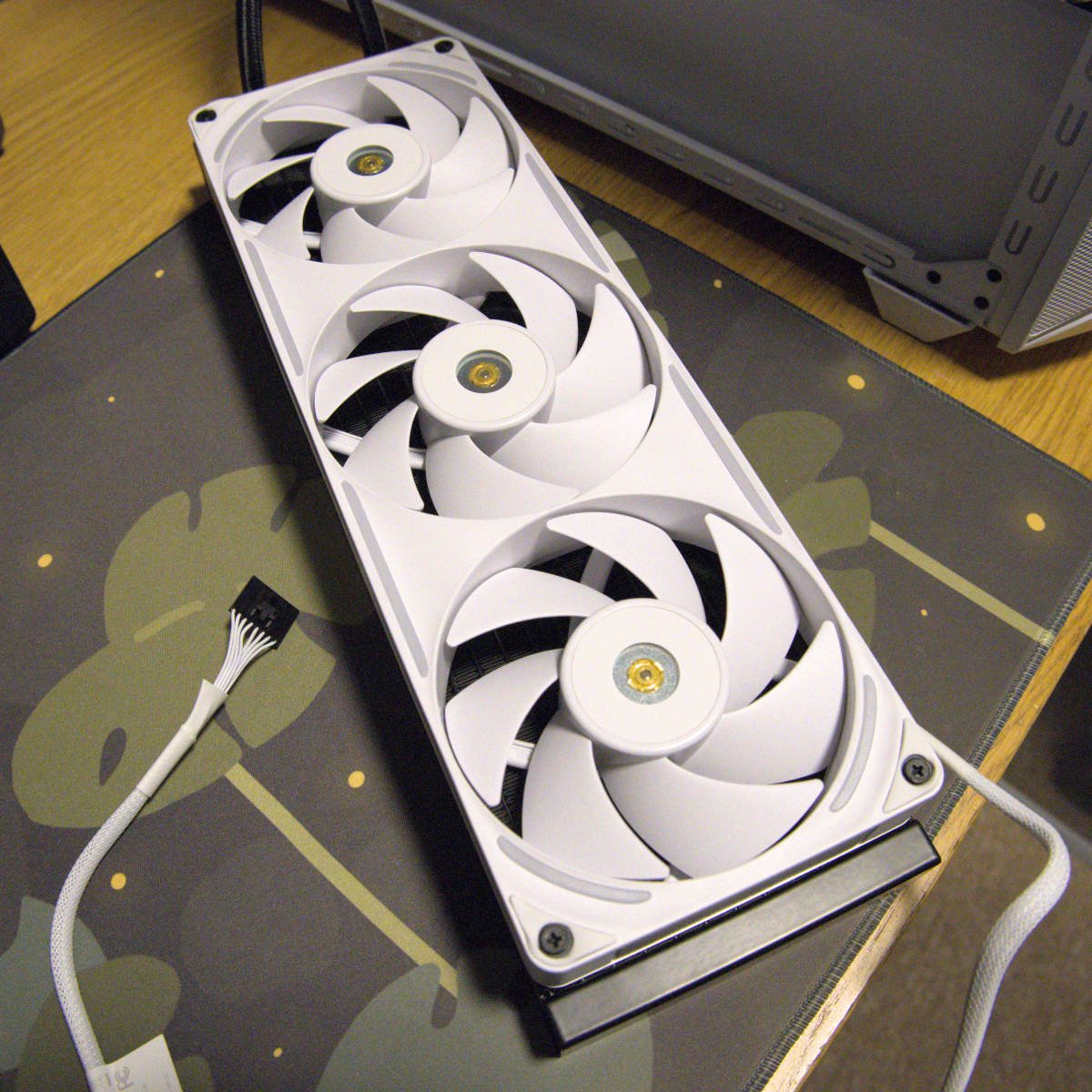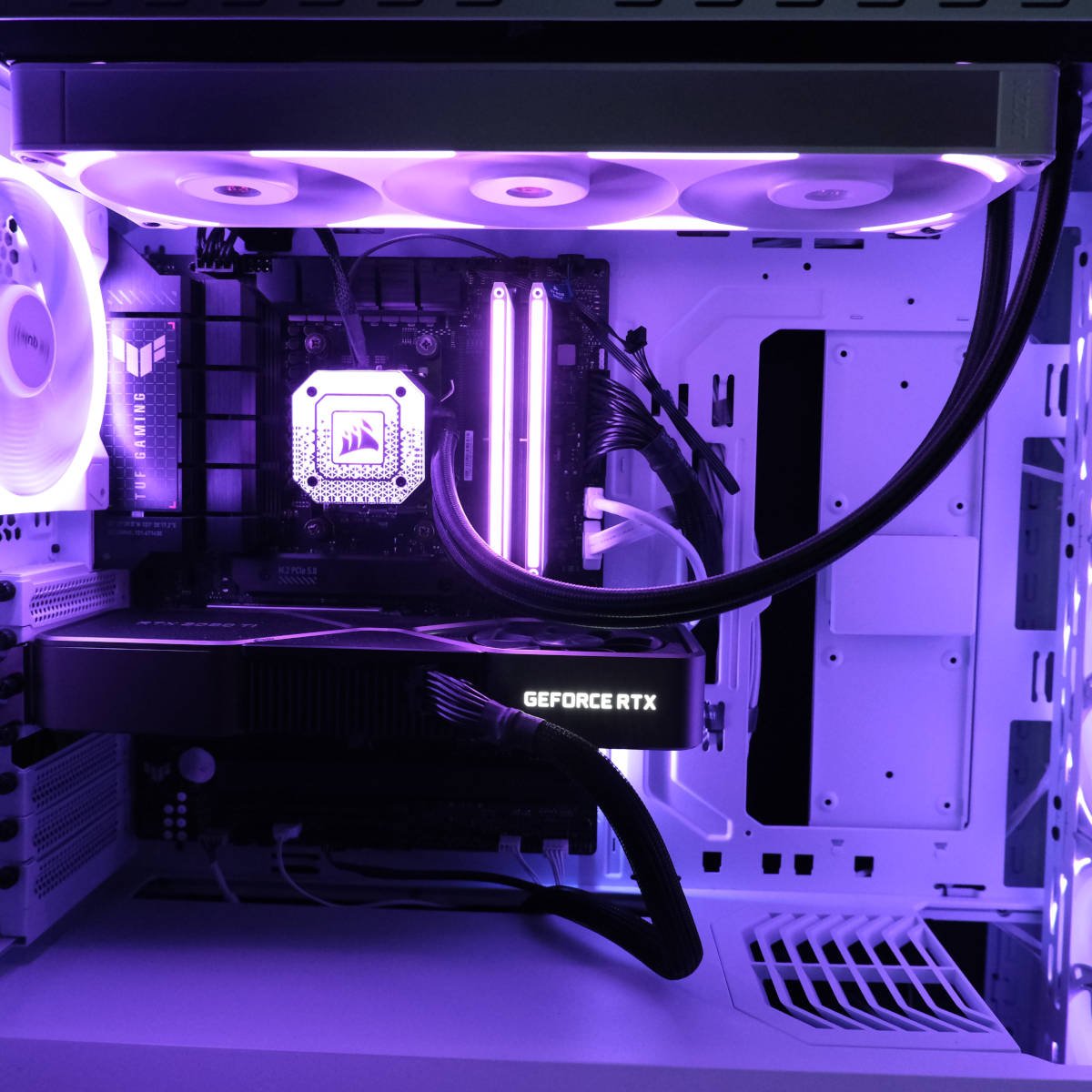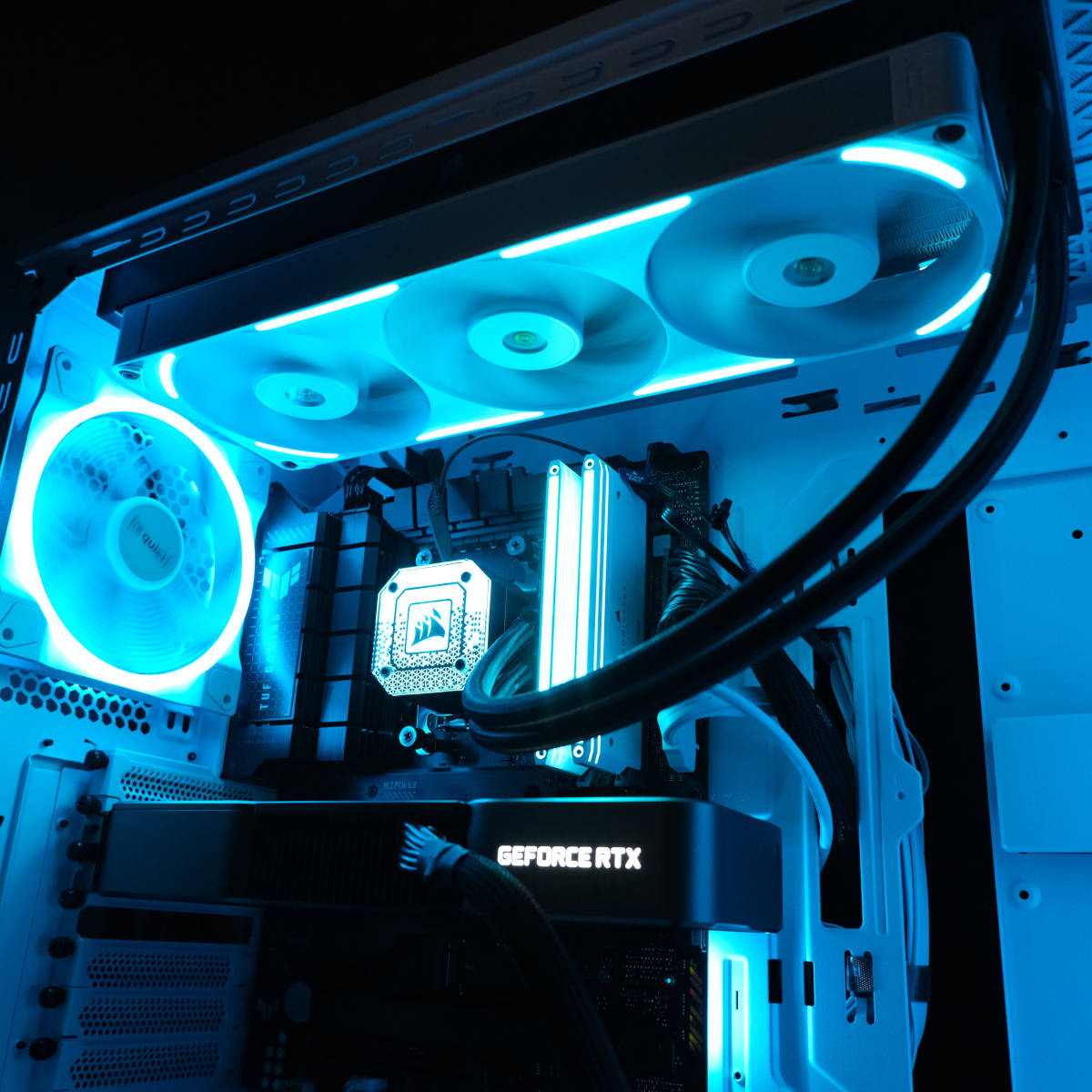Here comes a new challenger, as NZXT is upping the high-end cooling with its new Performance Fan Series. The F360X sits at the top of this new range, and it’s also the prettiest and most powerful of all. The company’s no stranger to this space, of course, with a unique take on fan design, but this new family really kick things up a notch.


NZXT F360X
£100 / $120
Pros
- Great cooling performance
- Tasteful industrial design
- Wide RPM range
- Convenient installation
- 280/240mm SKUs available
Cons
- No repairability
- Premium cost
Club386 may earn an affiliate commission when you purchase products through links on our site.
How we test and review products.
While this review concerns the F360X, which bands three F120X fans together in a single 360mm frame, there are other variants available in the lineup. Specifically, you can pick up these 120mm blowers individually, as well as in a 240mm block, alongside 140mm and 280mm alternatives.

Design
Zoning in on the capabilities of each 120mm blower inside the F360X, it’s clear these fans are Performance by name and nature. Boasting up to 176.7m³/h (104CFM) of airflow and 7.53mm-H₂O of static pressure, they’ll serve well wherever you put them, as intakes or exhausts, attached to cases or atop radiators.
The fans and frame feature a liquid crystal polymer (LCP) construction, which greatly reduces flex and vibration relative to other plastics such as ABS. NZXT is in good company, as competitors including Noctua also use this same material for their flagship designs.
There’s a mere 0.5mm gap separating each fan’s seven blades from the frame. Such tight tolerances minimise leakage, ensuring your system gets all the airflow and pressure these spinners can offer.
At their core, each fan boasts a custom bearing that combines magnetic levitation and fluid dynamics. This hybrid approach brings together the best of each, reducing friction and vibration, as well as wear and tear.
With these credentials, the F360X has all the makings of a flagship and a pretty one at that. NZXT’s design is undeniably attractive to the eye, even sporting a tasteful dash of RGB to boot.
There’s very little in the way of branding here, save for two debossed NZXT logos along the sides of the shroud. This minimalism, combined with brushed aluminium accents and exposed bearings, give the ensemble a classy industrial feel. One could almost call it Apple-like.


Installation is a breeze too thanks to the single shroud design. In place of the 12 screws you’d need to line up to marry up three fans with a case or radiator, you only need to use four instead. There’s no fiddly daisy chaining of cables either, with everything running off a single ARGB and PWM connector.
All that said, this clean finish does come at the expense of repairability. There’s no way to access the fans individually should anything go awry, meaning if one fails then the entire unit is effectively borked.
NZXT ships the F360X with a five-year warranty, though, which is enough to ally these anxieties, particularly taking the high build quality into account. However, it’s an important drawback that shouldn’t be ignored when considering these single-shroud fans.

Performance
Following on from my Noctua NF-A12x25 G2 review of sorts, I’m once again calling on my personal Sabre X3D rig. I’ll be using this system to test the mettle of the F360X as it takes residence on my Corsair iCUE H150i Elite Capellix XT cooler. I’m tasking these NZXT fans with keeping my AMD Ryzen 7 7800X3D cool and putting it toe-to-toe with fresh results I’ve captured using the AIO water cooler’s stock Corsair AF120 RGB Elite fans.
I’ve set the four be quiet! Light Wings inside my Shadow Base 800 FX to 550RPM to ensure consistent and sufficient airflow and noise in the case across all runs. The system’s pump is also running on its ‘Quiet’ profile.
| F360X | AF120 RGB Elite | |
|---|---|---|
| Bearing | Magnetic Levitation / Fluid Dynamic | Fluid Dynamic |
| Max. airflow | 104CFM (176.7m³/h) | 65.57CFM (111.4m³/h) |
| Max. static pressure | 7.53mm-H₂O | 2.68mm-H₂O |
| Speed | 310-3,100RPM | 550-2,100RPM |
| Warranty | Five years | Five years |
I’ll run through the total speed range of each fan in increments of 300RPM, adjusting where necessary in the face of respective performance floors and ceilings. An all-core Cinebench 2024 benchmark serves as my choice of stressor, during which I’ll collect noise levels, as well as the average frequency and temperature of the CPU.
The 120W TDP of my Ryzen 7 7800X3D won’t prove as strenuous as higher-wattage alternatives. However, there’s still plenty to gain from pairing the chip with these F360X fans, as my results will demonstrate.
Acoustics
Capable of spinning at 310-3,100RPM, the acoustics of the F360X can vary massively. These fans are whisper quiet at leisurely speeds but turn into bellowing blowers as you approach their limit.
I measured noise levels ranging between 31.2-77.7dBA. Personally, I wouldn’t run any fan above 50dBA for the sake of comfort, particularly in shared spaces like an office. However, considering the RPM in play, it’s no wonder the F360X runs rowdier at higher speeds.
| F360X (Max.) | AF120 RGB Elite (Max.) | |
|---|---|---|
| 3,100RPM | 77.7dBA | – |
| 3,000RPM | 76.5dBA | – |
| 2,700RPM | 73.7dBA | – |
| 2,400RPM | 70.2dBA | – |
| 2,100RPM | 66.4dBA | 65.9dBA |
| 1,800RPM | 62.7dBA | 62.1dBA |
| 1,500RPM | 58.9dBA | 56.6dBA |
| 1,200RPM | 50.3dBA | 50.4dBA |
| 900RPM | 40.8dBA | 43.7dBA |
| 600RPM | 32.7dBA | 35.0dBA |
| 550RPM | 32.7dBA | 33.9dBA |
| 310RPM | 31.2dBA | – |
Relative to my trio of AF120 RGB Elites, the F360X is 0.1-2.9dBA quieter at 1,200RPM and below. Push beyond that speed, though, and the tables turn in favour of Corsair’s fans, albeit only by 0.5-0.7dBA.
These are respectable results for both fans, but the F360X clearly has the overall edge. My preference for NZXT’s offering only grows with a 50dBA ceiling applied, with superior noise levels at lower RPMs.
Temperatures
The balancing act of temperatures and noise is one everyone must face when tweaking their gaming PC, even during cold winter spells like the one I’m enduring during this spot of testing. While this environment is a best case scenario for any fan, the F360X still manages to find room to push performance.
| F360X (Max.) | AF120 RGB Elite (Max.) | |
|---|---|---|
| 3,100RPM | 72.8°C | – |
| 3,000RPM | 73.4°C | – |
| 2,700RPM | 73.5°C | – |
| 2,400RPM | 73.9°C | – |
| 2,100RPM | 74.6°C | 77.1°C |
| 1,800RPM | 76.0°C | 77.8°C |
| 1,500RPM | 77.5°C | 77.9°C |
| 1,200RPM | 77.8°C | 79.2°C |
| 900RPM | 79.8°C | 81.6°C |
| 600RPM | 82.4°C | 84.0°C |
| 550RPM | 83.0°C | 84.4°C |
| 310RPM | 86.1°C | – |
At full pelt (3,100PM), my Ryzen 7 7800X3D is running at a wonderfully cold 72.8°C. However, even while operating at a snail’s pace (350RPM), the fans manage to keep the CPU at a respectable 86.1°C, a few degrees out from its maximum operating temperature of 89°C.
Examining results across Corsair and NZXT fans, the latter are cooler across all comparable RPMs by 0.4-2.5°C. These aren’t transformative leads in temperature for NZXT, but any amount of thermal headroom is welcome.
Frequencies
Finally, let’s take a look at how all that extra cooling translates into additional performance.
| F360X (Avg.) | AF120 RGB Elite (Avg.) | |
|---|---|---|
| 3,100RPM | 4,842MHz | – |
| 3,000RPM | 4,840MHz | – |
| 2,700RPM | 4,836MHz | – |
| 2,400RPM | 4,840MHz | – |
| 2,100RPM | 4,836MHz | 4,820MHz |
| 1,800RPM | 4,826MHz | 4,817MHz |
| 1,500RPM | 4,821MHz | 4,816MHz |
| 1,200RPM | 4,819MHz | 4,801MHz |
| 900RPM | 4,803MHz | 4,778MHz |
| 600RPM | 4,778MHz | 4,740MHz |
| 550RPM | 4,770MHz | 4,735MHz |
| 310RPM | 4,704MHz | – |
Lower temperatures allow processors to achieve higher boost clocks for longer periods under load. Unsurprisingly, as the more powerful fan, the F360X makes it easier for my Ryzen 7 7800X3D to reach higher operating frequencies than with my AF120 RGB Elites.
Fan versus fan, the F360X enjoys frequency leads of 9-38MHz at comparable RPMs. These are admittedly thin margins, but don’t forget these extra megahertz are a welcome bonus in addition to lower noise levels.

Conclusion
I didn’t expect to become so enamoured with the F360X. The aesthetics of this fan collection fit so naturally into my panda-style build, with the white variant particularly popping against the black of my AIO cooler’s radiator. Cooling performance is great to boot too, with more than enough chops to keep my CPU cool without kicking up an audible fuss.
I’m personally comfortable living with the single-frame design’s lack of repairability but appreciate this will be a line others won’t want to cross. The bigger obstacle for me with regards to NZXT’s fans is price. At £100 / $120, you’re paying a small premium for this package, as even three Noctua NFA12x25 G2 fans only cost £90, but it’s more challenging to work with their colour scheme. With great looks, loads of power, not to mention sheer convenience, I’d rather pay more for the NZXT F360X in this rig.
For those comfortable splashing out a little extra for powerful cooling that’s pleasing to both eyes and ears, while being clutter-free and easy to install, you’d do well to consider including an NZXT F360X or two in your next build.


